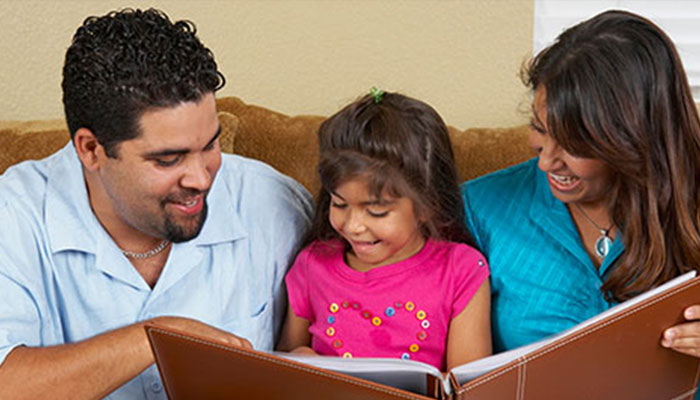While we believe that the books and resources recommended may be of value to you, keep in mind that these are suggestions only and you must do your own due diligence to determine whether the materials are appropriate and suitable for your use. PNC has no sponsorship or endorsement agreement with the authors or publishers of the materials listed.
FALL

Family Trees
Children will learn about the parts of
trees and will make family trees.

Lesson Objective
Children will learn about the parts of a tree and will explore how individual family members correspond to individual parts of a tree.
ScienceArt
What You'll Need
Note: Children will need to bring in photos from home, or you can have children draw pictures of various people in their families.
- Picture of a tree
- Pictures of children’s family members
- Pictures of your own family members
- Green construction paper – 2 large sheets per child
- Brown construction paper – 1 large sheet per child
- Tree trunk template - include several branches for children to glue leaves on
- Tree leaf templates
- Glue
- Safety scissors
What To Do
Note: Prior to the start of the lesson, cut out one tree trunk and several leaves to use for your demonstration.
- Display the picture of the tree and guide children in naming and talking about the parts of the tree.
- Discuss how a tree with its strong trunk, branches, and leaves can remind us of a family (see Did You Know?).
- Demonstrate your own family tree using the pre-cut trunk, leaves, and the photos of your own family members.
- Have each student trace the templates on their brown and green construction paper, then cut out the shapes, or have students design and cut their own tree trunks and leaves.
- Have the children glue leaves onto the upper and lower branches of their trees.
- Help the children cut out the pictures of their family members so they can be pasted onto the leaves.
- Guide children in placing the pictures of the older people on the leaves of the upper branches and younger people on the leaves of the lower branches.
- Have the children glue their pictures onto the leaves.
- Display children’s family trees so they can be shared with the class.
Resources
Home School Resources
Home educators: use these printable lesson PDFs to teach this lesson to your home schoolers. They're available in English and Spanish.
Content Provided By
Common Core State Standards Initiative – These lessons are aligned with the Common Core State Standards ("CCSS"). The CCSS provide a consistent, clear understanding of the concepts and skills children are expected to learn and guide teachers to provide their students with opportunities to gain these important skills and foundational knowledge [1]. Visit the CCSS


